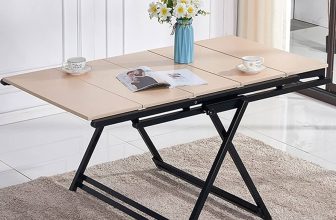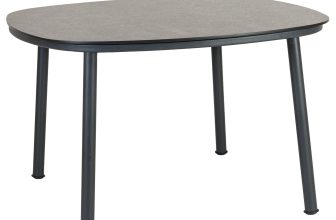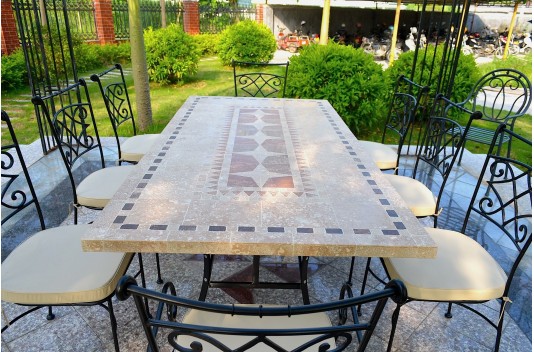Exploring Glass Dining Tables: A Stylish Dining Solution Glass dining tables are elegant and contemporary…
Pine dining tables offer a unique blend of rustic charm, durability, and versatile style that can transform any dining area into a warm, inviting space. In this comprehensive guide, we explore the many facets of these beautiful pieces of furniture—from their benefits and selection tips to care, design trends, and environmental impact. Whether you’re renovating your home or simply looking to add a statement piece, read on to learn how pine dining tables can enhance your décor.
Introduction to Pine Dining Tables
Pine dining tables have been a popular choice for homeowners for generations. Known for their natural grain, light color, and subtle imperfections, these tables exude a character that speaks to both tradition and contemporary design. In today’s fast-paced world, many people are rediscovering the appeal of rustic furniture that not only serves as a focal point but also tells a story through its natural beauty.
Pine is an affordable hardwood that ages gracefully, often developing a patina that adds warmth to any interior. Designers appreciate its workability, as it can be easily stained, painted, or left in its natural state. This versatility makes pine dining tables suitable for a range of décor styles—from country and farmhouse to modern minimalist.
Benefits of Pine Dining Tables
Choosing pine dining tables for your home comes with a variety of benefits:
-
Affordability: Pine is typically less expensive than many other hardwoods, making it an accessible choice for quality furniture.
-
Sustainability: When sourced responsibly, pine is a renewable resource, and many manufacturers adopt eco-friendly practices.
-
Versatility: Thanks to its light color and subtle grain patterns, pine can blend with multiple décor themes. Its adaptability allows it to complement both classic and contemporary styles.
-
Ease of Customization: Pine’s softwood nature means it’s easier to work with. It can be refinished, painted, or stained to match your existing décor.
-
Durability: While pine is a softer wood compared to oak or walnut, with proper care, pine dining tables can last for decades and often become cherished family heirlooms.
These advantages make pine dining tables an excellent investment for anyone looking to blend affordability with timeless style.
How to Choose the Best Pine Dining Tables
Selecting the perfect pine dining table involves considering several key factors:
Size and Shape
When choosing a dining table, first consider the size of your dining area. Pine dining tables come in various shapes, including rectangular, square, and round. Rectangular tables often suit larger rooms, while round tables promote intimacy in smaller spaces. Think about your lifestyle: if you frequently host dinner parties, you might prefer a table with extendable leaves for extra seating.
Design and Finish
The finish of a pine dining table can dramatically affect its look and feel. Some prefer a natural, lightly varnished finish to highlight the wood’s inherent beauty, while others may opt for a painted or stained look to match specific interior color schemes. Consider complementary design elements in your room, such as chairs and décor accessories, to ensure a cohesive style.
Construction Quality
Examine the joinery and overall construction of the table. Look for robust construction techniques such as dovetail joints or mortise and tenon connections that indicate a sturdy build. Even though pine is a softer wood, well-constructed pieces can stand the test of time.
Budget Considerations
While pine dining tables are generally budget-friendly, prices can vary based on craftsmanship, design complexity, and finish quality. It’s essential to balance quality with cost to ensure that your investment brings lasting satisfaction without overspending.
Caring for Pine Dining Tables
Maintaining your pine dining table can ensure it continues to look beautiful for years. Here are some care tips:
-
Regular Cleaning: Dust your table frequently using a soft, dry cloth. For spills, gently wipe with a damp cloth and mild detergent, then dry thoroughly.
-
Avoid Harsh Chemicals: Use cleaners that are specifically designed for wood furniture. Harsh chemicals can damage the finish and the wood itself.
-
Polishing and Oiling: Depending on the finish, you may occasionally use a wood polish or oil to keep the surface nourished. Always follow the manufacturer’s guidelines for the best results.
-
Preventing Scratches: Use placemats, coasters, and tablecloths to protect the surface from heat, spills, and scratches. A felt pad under decorative items can also prevent damage.
-
Seasonal Considerations: Changes in temperature and humidity can cause wood to expand or contract. Avoid placing your dining table in direct sunlight or near heat sources to minimize these effects.
These practices not only preserve the appearance of your furniture but also extend its life, ensuring that your pine dining table remains a centerpiece of your home for decades.
Styling Your Home with Rustic Wooden Dining Furniture
Integrating rustic wooden dining furniture into your home décor can create a warm, inviting atmosphere. Here are a few styling ideas:
-
Mix and Match: Combine pine dining tables with vintage chairs, reclaimed wood sideboards, or metal light fixtures for a modern rustic vibe.
-
Layered Textures: Incorporate natural fabrics, such as linen or cotton, along with stone or metal accents, to add depth and texture to your dining space.
-
Personal Touches: Customize your table with a hand-painted design or personalized engravings to make it uniquely yours.
-
Green Elements: Adding potted plants or a vase of fresh flowers can further emphasize the natural beauty of pine wood.
Using these styling tips, you can create a cohesive look that highlights the character and functionality of your dining furniture while complementing other elements of your interior design.
Design Trends and Customization Options
Modern design trends continue to influence the way we perceive and use traditional furniture. Today’s trends emphasize sustainability, minimalism, and multi-functionality. Here’s how these trends can integrate with pine dining tables:
-
Sustainable Living: Consumers are increasingly prioritizing eco-friendly products. Look for tables made from sustainably sourced pine and finished with low-VOC (volatile organic compounds) products.
-
Minimalist Aesthetics: Even rustic furniture can adopt a minimalist approach. A simple, sleek pine dining table with clean lines can be a statement piece in a contemporary setting.
-
Customization: Many craftsmen offer bespoke options for pine dining tables. Customization allows you to choose dimensions, finishes, and design details that perfectly suit your space and style.
-
Mixed Materials: Combining pine with other materials, such as metal or glass, can create a striking contrast. This blend of textures offers both durability and visual interest.
For more insights on historical wood craftsmanship and design heritage, consider exploring resources available on Historic England.
Sustainable Sourcing and Environmental Impact
Sustainability is a key consideration for modern homeowners. When selecting pine dining tables, it is important to ensure that the wood is sourced responsibly. Look for certifications such as FSC (Forest Stewardship Council) which indicate that the wood has been harvested in an environmentally responsible manner.
Responsible sourcing not only helps protect forests but also supports ethical business practices. By choosing furniture that emphasizes sustainability, you contribute to a healthier environment and promote practices that respect nature’s balance. Additionally, sustainable practices often lead to higher quality craftsmanship as manufacturers focus on long-term durability rather than short-term trends.
Consider researching local sources or artisans who prioritize eco-friendly practices. Engaging with local craftsmanship not only supports community businesses but also reduces the environmental impact associated with long-distance transportation.
FAQs About Pine Dining Tables
Q1: What makes pine dining tables a popular choice?
A1: Pine dining tables are popular due to their affordability, natural beauty, and versatility. They offer a rustic charm that can adapt to various décor styles, from traditional to modern.
Q2: How should I care for my pine dining table to ensure longevity?
A2: Regular cleaning with a soft cloth, using mild cleaners, and avoiding harsh chemicals are essential. Additionally, using coasters, placemats, and periodic polishing or oiling can help maintain its finish.
Q3: Can pine dining tables be customized?
A3: Yes, many manufacturers and craftsmen offer customization options for pine dining tables. You can choose dimensions, finishes, and design details to perfectly suit your interior style.
Q4: Is pine a durable material for a dining table?
A4: While pine is a softer wood compared to some hardwoods, proper care and maintenance can ensure that it remains durable and beautiful for decades. Many people appreciate the evolving character that develops with age.
Q5: What interior design styles work best with pine dining tables?
A5: Pine dining tables work well with a variety of styles. They are ideal for rustic, farmhouse, and traditional decors but can also complement modern minimalist interiors when paired with clean lines and subtle accents.
Final Thoughts
Pine dining tables offer an exceptional combination of beauty, affordability, and versatility that makes them a beloved choice for many households. Their natural characteristics, combined with the opportunity for customization and sustainable sourcing, ensure that they not only enhance your dining space aesthetically but also contribute to a more eco-friendly lifestyle.
Whether you are renovating an old dining area or designing a new space, pine dining tables bring warmth and authenticity to your home décor. Their unique charm and historical significance add character that goes beyond mere functionality. With thoughtful care and a keen eye for design, your pine dining table can become a cherished centerpiece for family gatherings and memorable meals.
By embracing sustainable practices and personalized design options, you ensure that your investment in a pine dining table is both stylish and environmentally responsible. As you plan your next home update, consider the enduring appeal of these timeless pieces, and let them inspire a dining space that is as inviting as it is beautiful.
Embrace the rustic elegance and functional charm of pine dining tables to create a dining area that tells your unique story—one meal, one gathering, and one shared memory at a time.


























